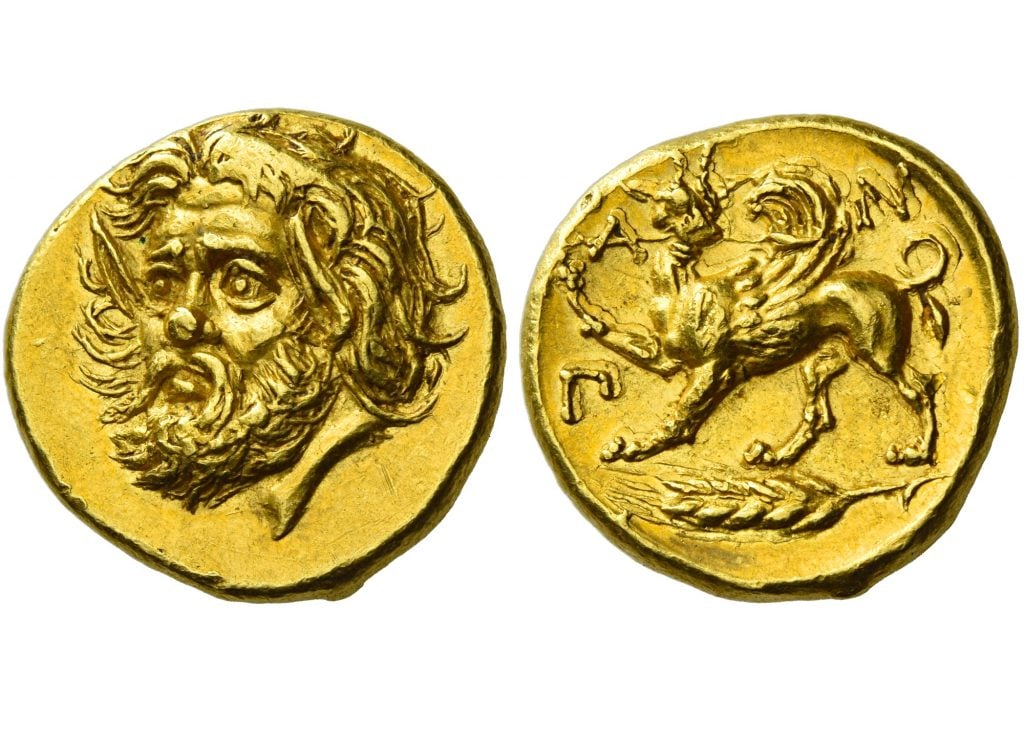
Image courtesy of Numismatica Ars Classica.
In May 2023, a remarkable event in the world of numismatics took place when a gold stater from the ancient Greek city of Panticapaeum sold for approximately $6 million at an auction in Zurich, Switzerland. This sale set a new record for the most expensive ancient coin ever sold at auction. [1][2][3]
The coin, minted around 340–325 B.C.E., features a detailed engraving of a satyr on its obverse and a griffin holding a spear in its beak on the reverse. The satyr is believed to reference King Satyros I, while the griffin symbolises the mythical guardians of Scythian gold. The exceptional artistry suggests it was crafted by a master engraver. [1][2][3]
This particular stater has a notable provenance. It was once part of the State Hermitage Museum's collection in St. Petersburg but was sold in 1934 during Stalin's regime to raise funds for industrial projects. It later became part of the Charles Gillet collection, a renowned assemblage of Greek coins. [1][2][3]
The coin's rarity and historical significance contributed to its record-breaking price. Most known specimens of this issue are housed in museums, making this one of the few, if not the only, examples in private hands. [1][2][3]
This sale underscores the enduring allure of ancient coins among collectors and the high value placed on pieces with exceptional artistry and provenance.
References: